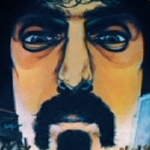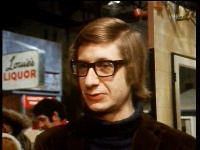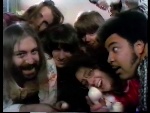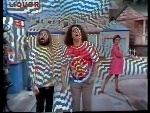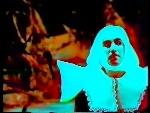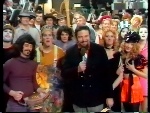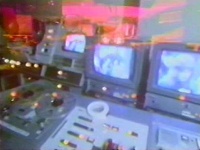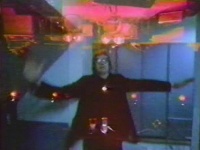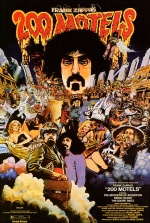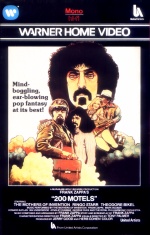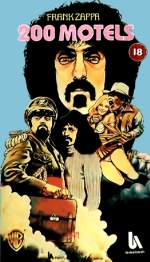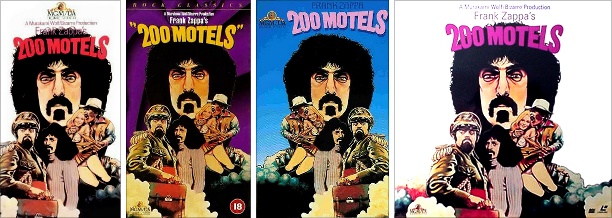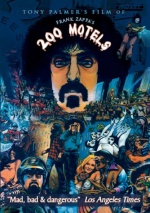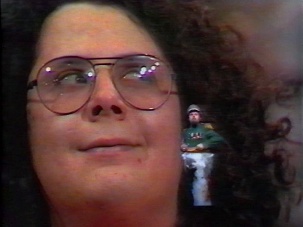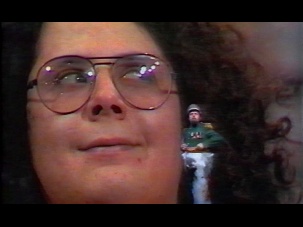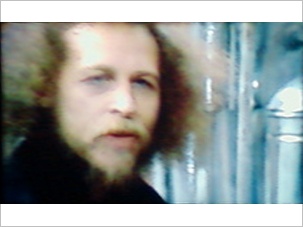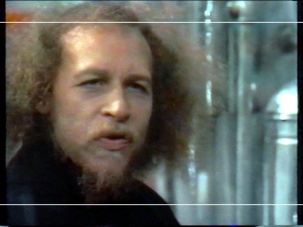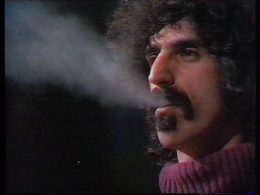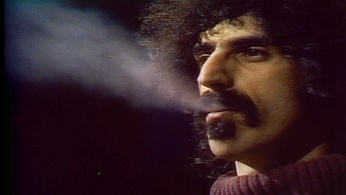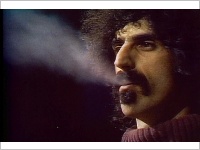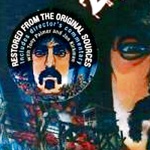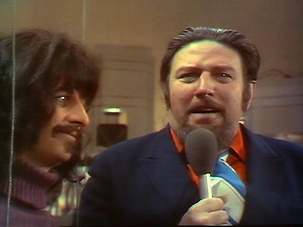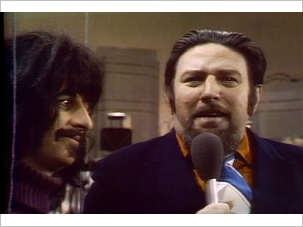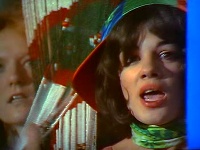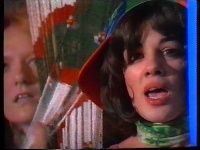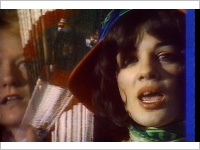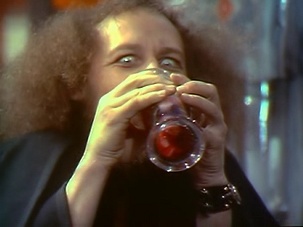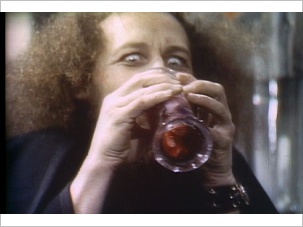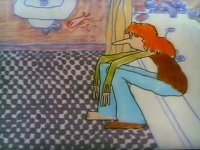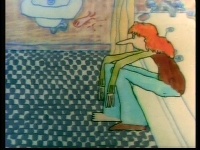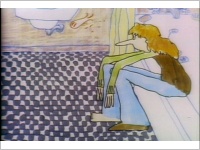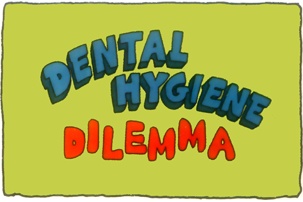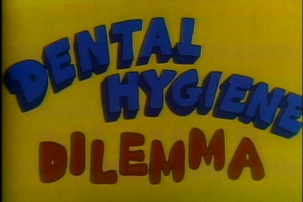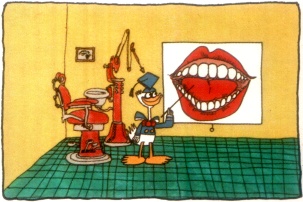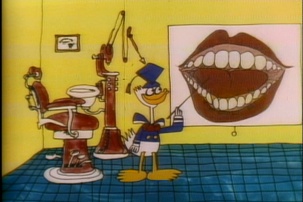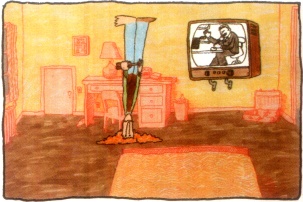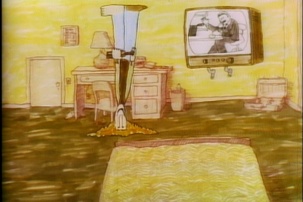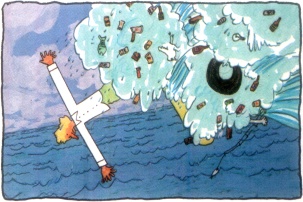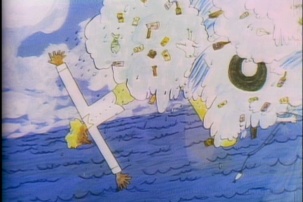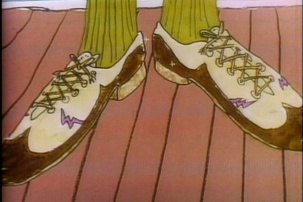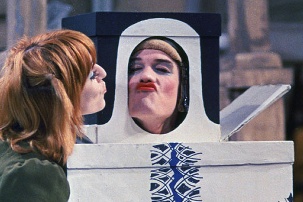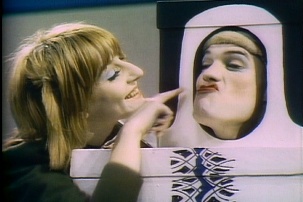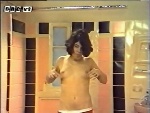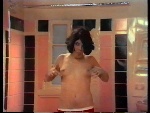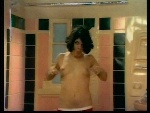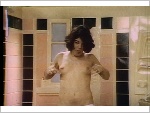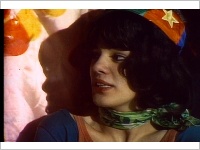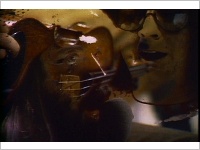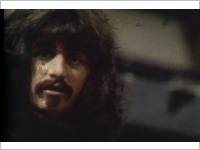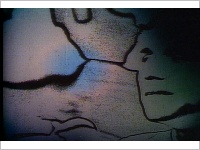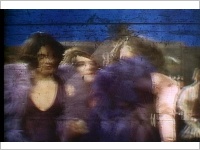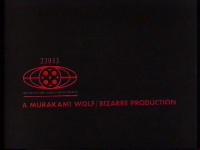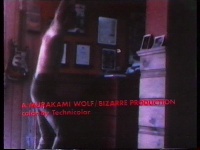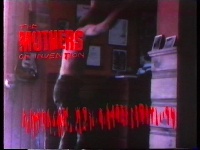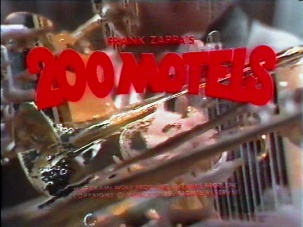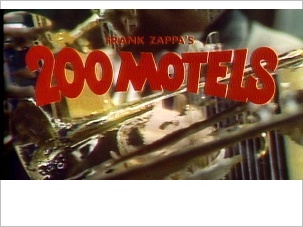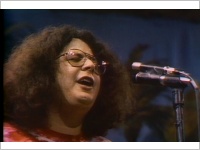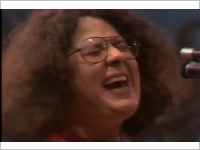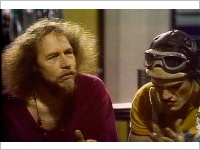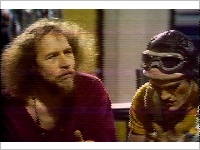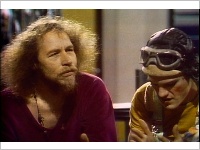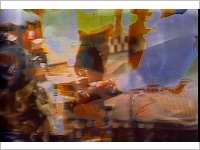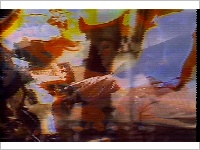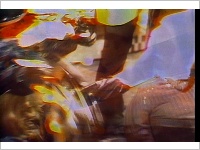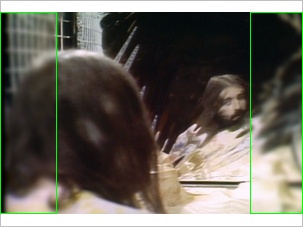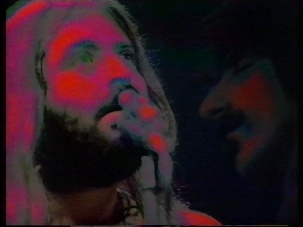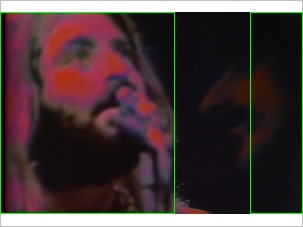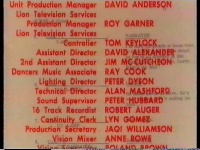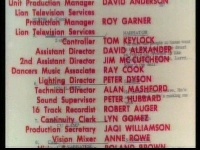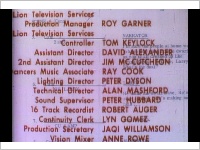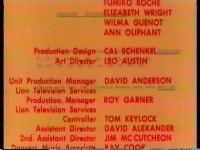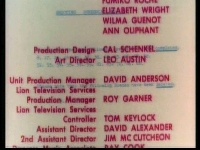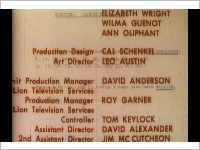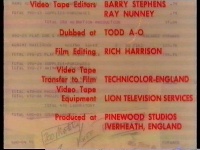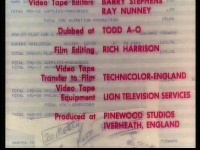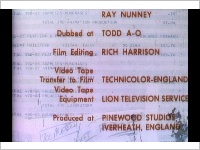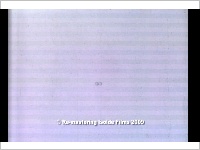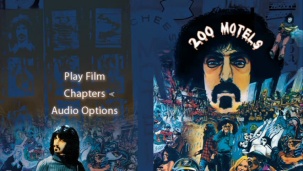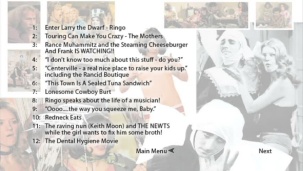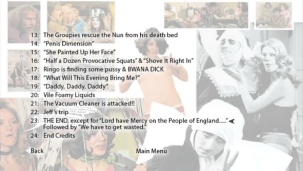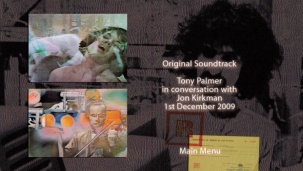|
EDIT NEWS: 200 Motels on DVD
| |||||||||||||||||||||||||||||||||||||||||||||||||||||||||||||||||||||||||||||||||||||||||||||||||||||||||||||||||||||||||||||||||||||||||||||||||||||||||||||||||||||||||||||||||||||||||||||||||||||||||||||||||||||||||||||||||||||||||||||||||||||||||||||||||||||||||||||||||||||||||||||||||||||||||||||||||||||||||||||||||||||||||||||||||||||||||||||||||||||||||||||||||||||||||||||||||||||||||||||||||||||||||||||||||||||||||||||||||||||||||||||||||||||||||||||||||||||||||||||||||||||||||||
| Published April 2010 | |||||||||||||||||||||||||||||||||||||||||||||||||||||||||||||||||||||||||||||||||||||||||||||||||||||||||||||||||||||||||||||||||||||||||||||||||||||||||||||||||||||||||||||||||||||||||||||||||||||||||||||||||||||||||||||||||||||||||||||||||||||||||||||||||||||||||||||||||||||||||||||||||||||||||||||||||||||||||||||||||||||||||||||||||||||||||||||||||||||||||||||||||||||||||||||||||||||||||||||||||||||||||||||||||||||||||||||||||||||||||||||||||||||||||||||||||||||||||||||||||||||||||||
| 200 Motels on DVD | |||||||||||||||||||||||||||||||||||||||||||||||||||||||||||||||||||||||||||||||||||||||||||||||||||||||||||||||||||||||||||||||||||||||||||||||||||||||||||||||||||||||||||||||||||||||||||||||||||||||||||||||||||||||||||||||||||||||||||||||||||||||||||||||||||||||||||||||||||||||||||||||||||||||||||||||||||||||||||||||||||||||||||||||||||||||||||||||||||||||||||||||||||||||||||||||||||||||||||||||||||||||||||||||||||||||||||||||||||||||||||||||||||||||||||||||||||||||||||||||||||||||||||
The first ever (official) DVD release of the film last month on the Voiceprint label should have been the perfect opportunity to rectify this. Sadly, this release - overseen and 'restored' by original co-director Tony Palmer - stands out as not only the worst edition of the film ever commercially released but could actually hold the honour of being the worst DVD ever compiled. Before we get to the many reasons why, here's a brief overview of how the film came to be (pending a much longer and more detailed article which will be added later). 200 Motels was originally the title Frank Zappa bestowed on a completed suite of orchestral scores which he'd been scribbling over a period of about four years, usually in motel rooms while the original Mothers of Invention were touring in the late-60s (the title being an rough estimation of how many such motels he'd booked into over that period). The suite was eventually given its premiere performance at the UCLA by the Los Angeles Philharmonic Orchestra, conducted by Zubin Mehta, on May 18 1970 as part of a sell-out concert (which also featured an interim 'Mothers' performing a few old favourites). A subsequent live tour with a new line-up of The Mothers (which included Turtles vocalists Mark Volman and Howard Kaylan, who were on the guest-list of the UCLA gig) saw one concert filmed for the Dutch TV channel VPRO, and it's likely that this was the point at which plans began forming to turn 200 Motels into a television special: an expanded version of the LA gig, with enhanced fantasy sequences, orchestra and rock band performing live to camera, and a storyline depicting 'Life on the Road' of touring musicians. Throughout the rest of 1970, Zappa wrote and revised the various scenarios which would feature in the storyline, as well as composing fresh orchestral scores, and new songs which the Mothers showcased during the tour.
It was hoped that, by effectively shooting a movie as if it were a TV production - on 2 inch Quadruplex tape - the whole process would be rendered both faster and cheaper, with instant playback eliminating the need to wait for dailies and the live vision-mixing radically cutting down on post-production editing time. Since the European standard PAL video system afforded a better quality picture than NTSC in the US (and the Technicolor VT-to-35mm transfer process didn't even exist Stateside anyway) it was elected to shoot the film in England, at Pinewood Studios. The Royal Philharmonic Orchestra were booked to play the live orchestral score, pop icons Ringo Starr and Keith Moon, and folk singer Theodore Bikel, were hired to play some of the more fantastical characters, and the Mothers (old and new) were on-hand to mug their way through the completed 254-page script, playing 'versions of themselves' and thundering through the rock numbers which, given the intensity of the previous tour, were already rehearsed to perfection. The shoot commenced on Thursday, January 28 1971 and wrapped on Friday, February 5. Seven eight-hour days of studio filming - interrupted by a weekend which was doubtless given over to some hasty script discussions as it soon became clear that the film couldn't be made in the allotted time period, at least not in the way Zappa had originally envisaged. Of the script's 101 scenes, only about two-thirds actually made it to the cameras - with whole chunks being dropped on a daily basis from the schedule, and simpler 'compromised' set-ups (often just retaining the base elements of scenes which originally involved complex choreography) written in by way of maintaining some degree of concession to 'continuity' for the final editing stage.
After eleven days of bickering in the claustrophobic environment of TVR studio on Windmill Street, Zappa, Palmer and a crack team of VT editors managed to assemble a working rough cut. By now throwing such cinematic trifles as 'narrative' and 'plot' to the four winds, the film's scenes were re-ordered, split into different sections (often spliced with or overlayed onto others) and generally twisted about a bit - rendering an already odd project decidedly bizarre. The notion of 200 Motels as a 'surrealistic documentary' at least offered some kind of get-out clause for such artistry. As Rance Muhammitz (Theodore Bikel) explains in one early scene, "Within the conceptual framework of the filmic event, nothing really matters. It is entirely possible for several subjective realities to co-exist. It is possible that all things are a deception of the senses!" The rough-cut on VT was transferred to 35mm and flown over to the US for further editing, refinements and audio mixing - by which time Tony Palmer had all but disowned his involvement in the whole project and began bad-mouthing it in the popular press, even apparently claiming at one stage that he'd unsuccessfully attempted to have his name removed from the credits (a claim which Zappa later dismissed as a shameful and barefaced lie during an appearance on The Old Grey Whistle Test on November 16, 1971, insisting that Palmer's contract specified "very strongly that he get plenty of credit on the film!"). Aside from the superimposed titles, credits, ten-minute animation sequence (and possibly the insertion of the Super 8 clips), it's difficult to guess at exactly how much the rough cut on VT differed from the final 98 minute final edit - although Zappa claimed, in a December 1971 interview for Time Out, to have edited the film down from an original running length of 120 minutes. More recently, Tony Palmer has claimed that everything in the script was shot and that very little was cut out...
While certainly a technological innovation at the time, being shot and edited on PAL and then transferred to 35mm yielded some annoying side-effects, most notably in terms of the film's running time. PAL video runs at 25 frames-per-second whereas films are projected at 24. It would appear that the solution - such as it was - to this conundrum was a reversal of the traditional PAL telecine process, which speeds films up from to 24 to 25 fps for TV broadcasts. In other words, 200 Motels slowed down the action from 25 to 24 fps - thereby increasing the running time of the VT-captured scenes by 4% and, naturally, rendering the dialogue and music rather sluggish (aside from the animated sequence which, having been created for film in the first instance, ran at the correct speed). Ironically, the PAL-telecined editions of the VHS, released by Warner Video in the 1980s, speed everything back up to 25 fps, affording the viewer the only official opportunity whereby the original performance speed can be enjoyed (since NTSC editions, using 3:2 pulldown, are more or less reflective of the cinematic running time).
The cover design didn't feature a certification symbol, evidently having been printed up before the UK's Video Recordings (Labelling) Act had been passed. An '18' certificate sticker did however appear on the outer-casing. Running at 96 rather than 98 mins due to the PAL transfer, the picture quality was quite passable, with only perhaps a little unnatural red tinting throughout. However, the audio track of the print was in pretty ghastly shape, with several sections suffering from distortion (resembling grinding and gargling - especially annoying when it affected songs which don't appear on the soundtrack album and were unavailable elsewhere) and others experiencing sudden audio drop-outs for no readily explained reason. It is presumed that one amendment to the film for the VHS release would have been the substituting of the eerie 1981 'revolving' United Artists ident at the beginning of the film, replacing the 1968 'United Artists - A Transamerica Company' logo which was in use during the time of its original release. All subsequent VHS releases of 200 Motels also used the 1981 ident.
An NTSC edition (WB PES 99498) was seemingly released in the US at the same time. All NTSC editions reviewed for this article appear to be pretty much interchangeable and are telecined from a different print to that used for the PAL releases. Leaving aside the usual differences in picture quality between the two systems, the colours on the US versions aren't as bright, giving the whole thing a slightly muddy greenish-brown look. Although no grinding distortion occurs on the soundtrack as per the UK tapes, the audio itself is rather dull and bassy by comparison. There are also slight speed wobbles during 'Strictly Genteel'. It's worth noting at this point that, although 90s TV broadcasts of the film in PAL territories (eg in the UK on the BBC) tended to favour the good picture/grinding audio edition found on the UK tapes, a more recent broadcast by Finnish station YLE Teema favoured the murky picture/dull audio US edition. The latter was 25 fps PAL - but converted from NTSC without the speeding-up process. In 1994, MGM/UA Home Video issued a further NTSC edition in the US (M200423) which, once again, set the cover paste-up against a white background - although they get extra marks for replicating the original 200 Motels logo in red. As far as we can tell, the same US video master was used, sandwiched between an 'MGM/UA Home Video' logo/fanfare. A UK edition as part of a MGM/UA 'Rock Classics' series also appeared (S050423) - with the paste-up set against a purple background and the title logo in yellow (and inverted commas). It isn't currently known for certain which master was used for this but doubtless it wasn't a fresh source. A French-subtitled SECAM edition also appeared on the MGM/UA label around this time, with the paste-up accidentally reversed (no doubt a transparency cock-up) and set against a blue background with the title in pink. It's likely that this is the edition posted to video streaming site Dailymotion a while back and which can mainly be compared to the PAL editions in terms of picture quality and audio problems.
An MGM/UA laserdisc release in 1997 (ML100423) was, until last month, the closest official 'digital' release of 200 Motels. Once again, if the screengrab on Information Is Not Knowledge is anything to go by, this appears to have been sourced from the same muddy-looking analogue masters as the NTSC VHSs - although inevitably looking slightly sharper by dint of a digital transfer. Although there were reported suggestions that a 200 Motels DVD would be released - to tie in with the first ever CD edition of the soundtrack album on MGM/Rykodisc - nothing appeared on the shelves. Unsurprisingly the underground market cleared up over the ensuing decade, with several bootleg discs doing the rounds (often being sold openly in stores and online) - but these have usually been straight captures from the NTSC or PAL VHS editions, with little or no attempts made to clean up the source. One bright spark did share his attempts at a 'remastered audio' version, with some visual tinkering on the picture and some of the songs on the soundtrack replaced by the stereo mixes from the CD (without realising that those songs would need to be slowed down by 4% in order to fit the NTSC visuals). With the overall distribution rights being retained by MGM/UA, no official Zappa-endorsed edition ever made it to the home-video market. The budget for Zappa's 1987 retrospective documentary The True Story of 200 Motels (released on VHS on his own Honker Home Video label) seemingly didn't even stretch to acquiring the rights to include clips from either the film or the original sound recordings, relying instead on behind-the-scenes footage shot for documentaries made by VPRO in 1970/71, live tapes of The Mothers and alternate performances of orchestral sections from his London Symphony Orchestra LPs). A terrible shame since one would have expected, at the very least, an all-out remastered stereo remix from the original mastertapes.
One question which should really be asked at this point however is this: if Frank Zappa experienced such hurdles in acquiring the rights for a release back then, how on earth has Tony Palmer managed to do so now? Did the film accidentally slip out of copyright while nobody was looking (as per The Beatles' Magical Mystery Tour, which has also yielded a poor-quality DVD release)? In no part of the 200 Motels DVD packaging do we find (just for example) the words 'Under license from MGM'. Copyright is given pretty firmly on the disc label as (c) & (p) Voiceprint Records 2009.
In the months leading up to this release there were several claims from Tony Palmer that the original VT masters had been found and were sitting on his shelves. He was very keen to debunk the myth that these had been destroyed (or, as Zappa claimed in The True Story of 200 Motels, ordered by producer Jerry Goode to be 'erased and sold as "Used Stock"' as a means of balancing the budget of the film). Whether the tapes found were indeed the original PAL session tapes, or even the VT rough-cut, was never fully explained (at the time of writing, Palmer's obituary of Zappa's ex-manager Herb Cohen credits him with the 'discovery of some of the original master tapes of that film'). Asked if the forthcoming DVD would feature out-takes, Palmer claimed that they were 'currently examining the material'. All of this seemed pretty exciting - the notion of a fresh transfer from 1971 source material - perhaps even a straight video presentation with all its fields intact (and at the correct performance speed to boot).
Well, give the 'controversial little rascal' his due, one might think. He can rewrite history in his own image to his heart's content as long as he's sufficiently 'proud' of the film to at least present it properly on DVD. Why, he can even retitle the film, Tony Palmer's Film of Frank Zappa's 200 Motels (thirty-nine years after he claimed he was trying to have his name removed) as long as the end-result stands firmly as a glowing testament to the brief, fractious but ultimately fruitful working partnership of two mavericks in their respective fields. Unfortunately, it doesn't. It looks like shit.
1. The Aspect Ratio There are several instances in 200 Motels where it seems obvious that the original picture was composed to fit within a 1.66:1 frame. Most notably the scene where Rance Muhammitz (Theodore Bikel) addresses the cinema audience as a blue screen overlay against Mark Volman's huge face. A fantastic image spoiled by the fact that, at open-matte, there's a gap just below his ankles - messing up the illusion of him supposedly walking in front of the cinema screen. Calculating a correct comparison from VHS editions poses a slight problem in that there's no way of knowing exactly how much of the original 35mm picture was framed by the telecine (and that's before you get to niggles like the disparities between full screen VT and cinematic 'Academy ratio') but a rough cropping of the 4:3 picture to remove black strips of VT 'nominal analogue blanking', and an application of a fake soft-matte should give us a fair indicator of how the film should be framed:
Other scenes affected by the lack of soft-matting include shots of the hotel rooms where the tops of the sets are clearly visible (although, as an illustration, these are perhaps less reliable, considering the stylised 'everything's fake' conceit of the film). The behind-the-scenes footage in the VPRO Frank Zappa filmt 200 Motels documentary shows that the VT monitors capturing the live action often have strips of masking tape placed over the tops and bottoms of the screen - seemingly a prehistoric version of the 'shoot and protect' guides used today. The best proof of the film's correct cinematic aspect ratio however can be found here in the form of a photograph of the cinema screen during a midnight showing at the Uptown Theater in Minneapolis on April 11, 2009. 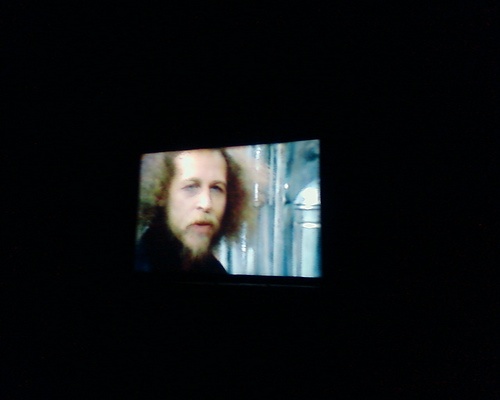
In retrospect, a straight widescreen TV crop now seems almost reasonable. The Voiceprint DVD of 200 Motels is advertised as 16:9 - and by default plays as 16:9 - but is actually a full screen picture artificially stretched to widescreen. In technical terms we have an NTSC 4:3 (720x480) image distorted horizontally to 853x480 - like some bad parody of an anamorphic release.
Perhaps the only reliable way to watch the picture in anything approaching the correct dimensions would be to bypass the disc's IFO files completely and watch the unstretched 720x480 VOBs. It probably wouldn't be a perfect representation but it would be the closest! Unless otherwise specified, the rest of the screenshots in this article will be favouring the latter option.
2. Picture Quality
Whether those claims of rediscovered tapes were true or not, one thing should be made absolutely clear here: no such primary 'original sources' were at hand when this DVD was compiled. Unless those sources happen to include a scratchy old well-worn theatrical print which, given the state of the washed-out colours and various analogue glitches, appears to have been telecined to videotape a long time ago. In fact, the odd discoloured, smudgy picture bears all the hallmarks of a conversion between two non-compatible systems (eg from NTSC to PAL or vice versa), rendering the whole thing similar to how videotaped US sitcoms used to look on British TV before the advent of digital transfers. Why such a shitty old copy of a shitty old print should be used - for a DVD released in 2010 - is a complete mystery, especially given that MGM actually released a fresh 35mm print from the original negative for various US cinematic 'revival' showings in 2009 (reported in some quarters as boasting a cleaned-up multi-channel mix and, with modern transfer techniques at play, rendered looking better than it ever previously has on the big screen). One notable showing was on August 27 when America Cinematheque presented it as part of a double bill alongside Zappa's 1979 movie Baby Snakes. In recent years they've also presented Palmer's films All My Loving and All You Need Is Love (the former with Palmer present) so you'd think he'd at least be on their mailing list! So, some visual comparisons. As previously mentioned, the picture quality of the old PAL and NTSC VHS releases tends to differ somewhat (and neither are a perfect representation of the original film), so what should the current release be compared with? It's probably fair to say that the most reliable indication of how the colours should look comes to us in the form of the original United Artists theatrical trailer included as an 'enhanced track' on the MGM/Rykodisc 1997 CD release of the soundtrack album. Even as tiny 320x240 MPEG and MOV files the colours on the trailer were quite an eye-opener to those only familiar with the film on VHS.
Ringo Starr and Theodore Bikel: Note how the trailer retains the nice, warm shiny look of the original VT recording. The DVD edition has all this dulled out, the flesh-tones rendered a pinkish grey, In terms of 'Technicolor' there's plenty of Red and Blue but a distinct lack of Green!
Janet Ferguson and Lucy Offerall: While the PAL VHS adds some unnatural redness to the picture it appears to retain the overall colour brightness. All missing from the DVD.
Don Preston and his vile foamy liquids: Again, the VT colours are screwed. Studio lights glistening on Preston's forehead all lacking.
The 'Dental Hygiene Dilemma' animated sequence: One of the biggest casualties of this DVD release - Cal Schenkel and Charles Swenson's nice garish brush-strokes reduced to timid pastel shades. As a further comparison, here are some scans of the actual animation layouts as featured in the original 200 Motels LP booklet (not the CD edition which just used a load of poor screengrabs from video).
Yes, even slightly messed-up scans - captured via a machine which is so old you can't even find the right drivers for it anymore - illustrate perfectly that the colours on this DVD are wrong. Production photos should probably fall outside the scope of these comparisons. But the colour difference is so vast in this case it can't really hurt...
As a final visual comparison here's some tits. A selection of screenshots from various versions of 'Half A Dozen Provocative Squats'.
Although not a very sharp screen-capture, the first picture is probably the truest example of 'primary source' VT colours in that it's captured from a BBC VT engineers' Christmas Tape assembled in 1979 (Good King Memorex). The three-second clip is used as part of a spoof newspaper ad which boasts "an interview with a lady who plays the National Anthem on her breasts" and - in true 200 Motels style - messes with the VT motion so that it runs forward, then backwards, then forwards. Note the extra picture information on either side and the top of the screen compared to the VHS editions.
3. Sound Quality The sound levels are also not constant throughout. There are instances - eg a few seconds into the song 'Mystery Roach' - where it sounds as if someone in the mastering booth wasn't expecting a sudden loud rock track and pushed the faders down a bit to avoid straying into distortion levels. Interestingly, the audio on original 1971 prints of 200 Motels were apparently mastered 3db below normal - with specifications made to the cinema to whack it up to 6db above normal when projected (which, mono or not, would have attacked the senses nicely within the echoey confines of the local Gaumont).
4. Missing Sections
The Janet/Lucy scene was just about salvageable despite the missing section. At least the dialogue doesn't suffer greatly from losing that one line. The same can't be said for the handover to Ringo Starr at the close of 'Penis Dimension' which, in its current state, makes no sense whatsoever.
Utilising old theatrical prints as a DVD source (rather than original negatives or interpositives) is often problematical. Constant runs through the projector inevitably result in a build up of dirt marks and scratches (which are always more evident at the start and end of each reel) and occasionally the celluloid physically snaps during the reel changes through overuse. Sadly, that appears to be what's happened here. The sections were either physically missing from the tape of the print or else considered too damaged to include. The average length of a 35mm reel is approximately 20 minutes. In 200 Motels, the reel-changes occurred at the following points:
It's worth noting that the version of 200 Motels posted to Dailymotion (most likely the SECAM edition mentioned earlier) also suffers from reel-change problems during the handover from 'Penis Dimension' to Ringo, although only the first second of Ringo's line is missing from that print. Also of note is that, on the DVD, before the first Reel Change, the nominal analogue blanking (ie the thin black strip on either side of a VT picture) is exclusively on the right-hand side of the screen. At the point of the Reel Change it suddenly jumps to the left, suggesting that each Reel was archived on a different tape. More on this later.
Another example of missing material occurs at the very beginning of the film. Although it is possible that this section was also damaged there appears to be an altogether more suspicious reason behind the cut. Which brings us to...
5. Copyright Revision a) Physically removing the first six seconds of visuals (more if you count the United Artists ident as being part of the film), thus cutting out the MPAA logo and the beginning of the Super 8 footage of Motorhead Sherwood dancing (under the caption 'A MURAKAMI WOLF / BIZARRE PRODUCTION; color by Technicolor'). Tony Palmer's revised edit fades in on the action at the exact moment the caption disappears and the 'MOTHERS OF INVENTION' logo appears on the screen. In order to disguise all this - and still provide a long enough sequence for the opening theme ('Semi-Fraudulent/Direct-From-Hollywood Overture') to play over - the dancing footage has been slowed down to about half its original speed (only returning to normal once we fade through to the orchestra shots. Despite all this, the very beginning of the opening theme is clipped slightly and the soundtrack cuts in with a nasty bump.
b) Stretching the picture vertically during the title graphic, thus cropping off the copyright info underneath (MURAKAMI WOLF PROD. INC. BIZARRE PROD. INC.; COPYRIGHT (C) MCMLXXI ALL RIGHTS RESERVED) accordingly. Ironically, this distortion of the picture represents the only point throughout the whole of the DVD that the movie can be viewed in its correct geometrical dimensions - albeit only when watched at the otherwise useless 16:9 ratio.
6. Patch-Ins
An instance of particular note occurs at exactly 0:25:36 into the DVD during the final chorus of 'Lonesome Cowboy Burt'. As we cross-fade from Jimmy Carl Black to Mark Volman and then to George Duke - the footage of Volman has been replaced (via some non-too-precise fades which attempt to replicate the original vision mixing but result in a slight double-image, possibly due to the size of the sources differing slightly). Curiously, the pasted-in alternate source seems to be much better quality, in fact resembling original VT colours rather than discoloured celluloid (there's even some evidence of the hitherto dulled-out Technicolor green on Volman's microphone as it reflects the studio lights). Comparing this with various other editions however it seems most likely that this section has simply been snipped from the NTSC laserdisc edition and treated to a slight decrease in colour saturation to make it match the surrounding clips a little better. There are still dirt-flecks in evidence, but these are white rather than black (ie slight abrasions on the original negative - identical on all prints of the film). Sadly, the shot only lasts a few seconds. By the time we fade through to George Duke we've returned to that nasty print again. Now, if that was possible to do with this scene, why couldn't something similar have been undertaken with Ringo's "three pair o' socks" amusement at the close of 'Penis Dimension'?
7. Overscan Anomalies However, the DVD edition features some really quite extraordinary screw-ups which look for all the world as if someone is attempting to correct the amount of black edging that's visible - manually, as we watch, using analogue equipment - resulting in the picture signal becoming wobbly and distorted for a few frames each time. This can be seen occurring at 0:07:46 during a shot of Don Preston and Motorhead Sherwood...
...and again at 0:14:31, during the second Interviewer ballet - except this fiddling results in more of the right-hand black strip becoming visible...
8. Inexplicable Blurring
Note that even the analogue blanking gets blurred in the process... When the colourful 'What Will This Morning...' sequence begins however it gets worse - with the left-hand blurring now expanding to encompass Kaylan's entire face. The blurred section on the right remains as before, leaving only a small section of the screen (ie about half of the overlayed image of Zappa) uncorrupted.
The blurring ceases at 1:11:55, exactly at the point that the cutaway to the Super 8 on-the-road home movie clips begins. When we return to the performance footage of Kaylan a few seconds later there's no blurring whatsoever. Quite why all this was undertaken is a complete mystery. There's a nasty celluloid scratch running down the middle of Kaylan's face, but no more nasty-looking than other parts of the film. There's some evidence to suggest that the blurred sections may also be patch-ins - ie overlays from an alternate source tape. During 'What Will this Evening Bring Me This Morning' - at 1:23:04 (during the montage of explosions, the vacuum cleaner being attacked and the extreme close-up of Zappa's eye) another blurred portion of the screen fades in, but doesn't quite match the rest of the picture. This finally fades out at 1:23:26 after Jeff's begins his "flipping out" scene. Two more instances of blurred content occur during the ensuing Fake Nightclub scene ('Daddy Daddy Daddy'). The first from 1:14:20 - 1:14:38, the second from 1:15:16 - 1:15:29. On these occasions the whole frame is blurred. These sequences also appear to have been pasted in from an alternate source since, although the scrapes and scratches on the print seem to be identical, the black VT edge on the left appears to increase in size during the blurring.
9. The Credits:
Note that the print used on the old PAL edition colour-tinted the script and production pages the credits run over, whereas the print used for the NTSC did not. The DVD retains some kind of tinting - but not necessarily the correct colour!
It is doubly annoying since those script and production pages make for interesting reading - and, despite all the misgivings about the print and colour quality, the DVD does at least render the text sharp enough to read properly. Just a shame that the cropping removes a large chunk of one of the few reasons left to acquire this disc at all.
So, the end of the film spool approaches, the dust, scratches and jumped frames suggest that the celluloid is heading for oblivion, and we reach the final scrolling, typewritten 'END' on the budget sheet... at which point the picture suddenly freezes (well, almost), most of scratches are gone, the left-hand vertical letterboxing has decreased slightly, and a digitally superimposed credit declares '© Re-mastering Isolde Films 2009' (Tony Palmer's own company). Now we'd have kept that one quiet. But there you go...
10. The Menu
The 'Chapters' and 'Audio Options' menus each use freshly-created montages of elements from the original LP booklet as backgrounds. The 'Chapters' screen also boasts the audio clip of 'Penis Dimension'.
It should perhaps be mentioned here that the main cover uses a version of Dave McMacken's artwork which was specifically rendered for use on the LP cover rather than the theatrical poster. It had been decided not to use Ringo Starr's features to sell the LP so Zappa requested a version of the painting which didn't feature his likeness in any way. Indeed, even the illustration of Larry the Dwarf descending from the heavens with his magic lamp has Ringo's face replaced by that of an expressionless dummy for the LP. The Voiceprint DVD kind of rectifies this situation by sticking a photo of Ringo as Larry the Dwarf on the back cover.
With so many elements of the original LP packaging being pilfered for the design, you'd think the compilers could at least have taken the opportunity to check the correct songtitles for the chapter titles. Sadly, it would appear that, in most cases, a simple lyric quotation was considered sufficient:
11. The Commentary
Ah well. Such a shame that it took Palmer quite so long to reach the above conclusion. As it currently stands, the Voiceprint DVD only really serves as a final insult to 200 Motels.
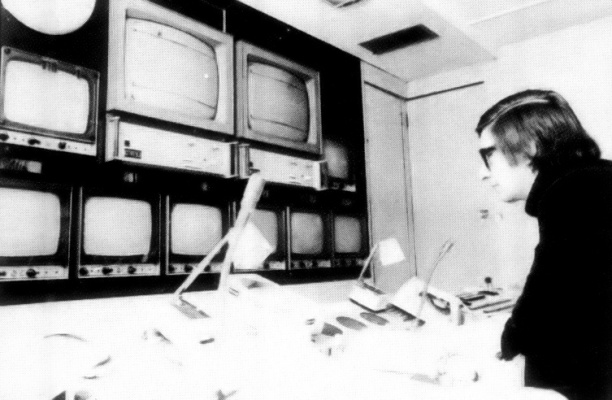 Tony Palmer showcasing the very latest developments in digital transfer technology
Tony Palmer showcasing the very latest developments in digital transfer technology
| |||||||||||||||||||||||||||||||||||||||||||||||||||||||||||||||||||||||||||||||||||||||||||||||||||||||||||||||||||||||||||||||||||||||||||||||||||||||||||||||||||||||||||||||||||||||||||||||||||||||||||||||||||||||||||||||||||||||||||||||||||||||||||||||||||||||||||||||||||||||||||||||||||||||||||||||||||||||||||||||||||||||||||||||||||||||||||||||||||||||||||||||||||||||||||||||||||||||||||||||||||||||||||||||||||||||||||||||||||||||||||||||||||||||||||||||||||||||||||||||||||||||||||
